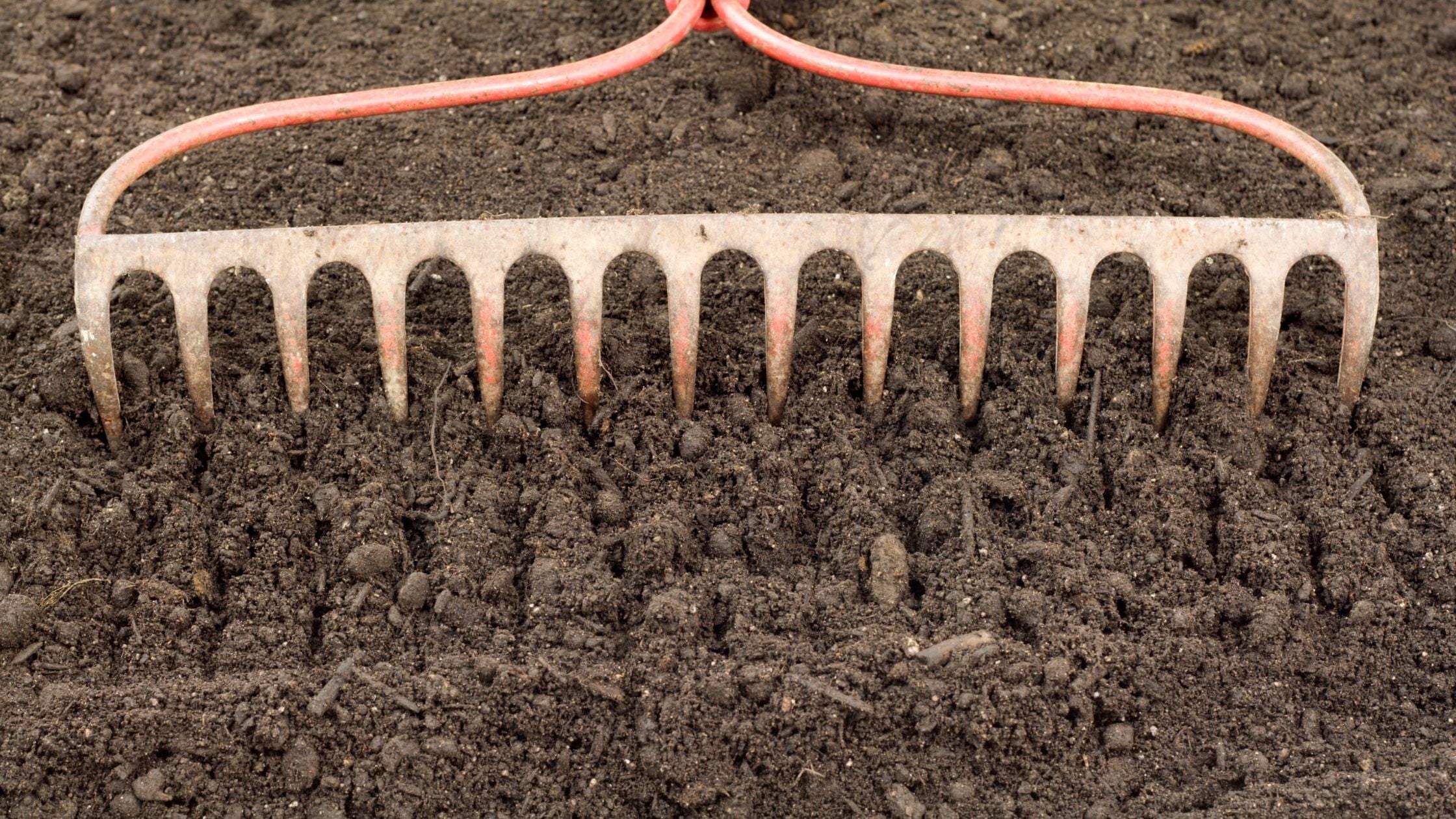Are you looking for ways to improve your garden’s soil quality? Or do you want to improve the aesthetic appeal of your yard?
If so, then a garden rake is all that you need. With this friend in your garden, you can transform your yard, but given the variety of garden rakes available on the market, you must wonder what type of garden rake you need.
Here, it’s important to know that there are many rakes, and each has a different purpose. And that’s why I have put together this post for you. Here, I will share different types of garden rakes, but before we get into the details, here is a buying guide that will help you choose the right type of rake for your garden.
Garden Rake Options
Garden Rake

A garden rake is typically a category of rakes that include several designs of rakes that you can use for your backyard or landscaping needs. Typically, a garden rake has a straight, long handle and a wide head that is at a right angle to the handle. However, you can also find small garden rakes.
You can find several garden rake types, but the three broad categories include the following.
Bow Rakes
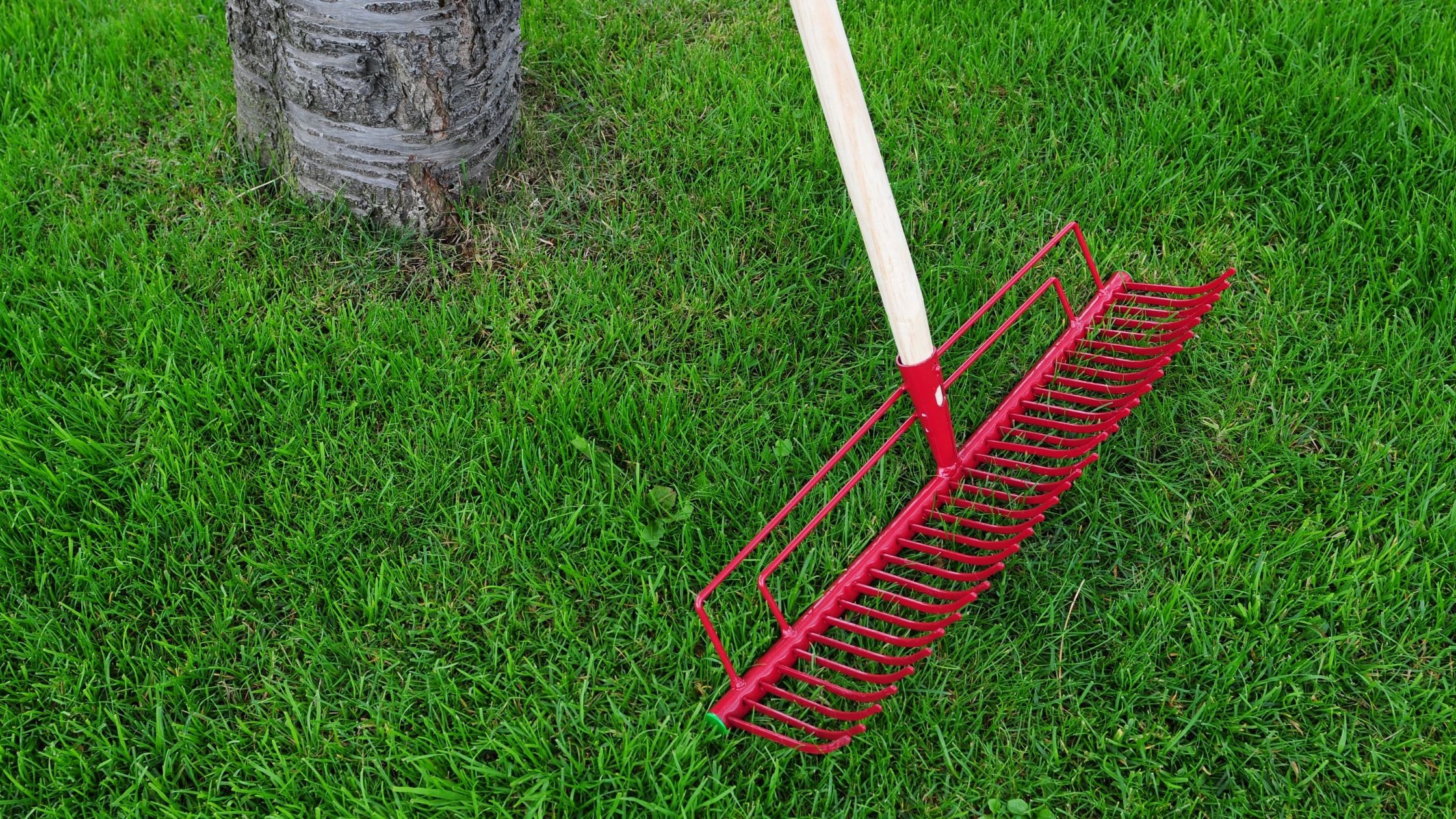
The bow rake is one of the garden rake types with 14 to 16 tines arranged in a straight line. The tines can be vertical or curved and have a long handle. This type of garden rake is great for several tasks, including removing weeds, roots, and rocks from the garden. Moreover, bow rakes are great for spreading mulch and tamping soil.
Landscape Rakes
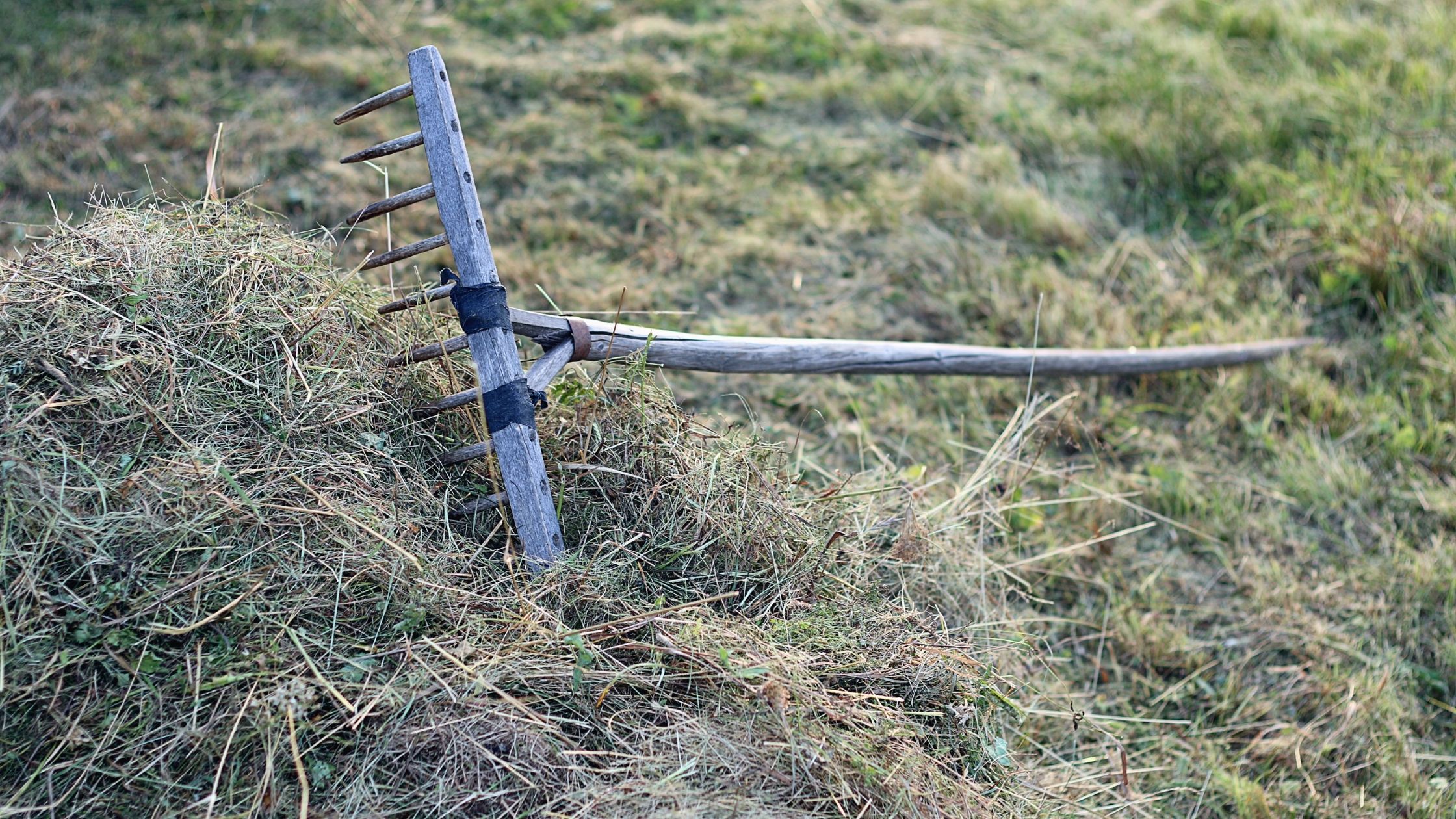
Another garden rake type is landscape rakes, which is again a general term for rakes with wider heads. Usually, the width of landscape rakes range between 20 and 36 inches, and because they have a broader head, they are made up of lightweight material such as aluminum. Landscape rakes also perform various tasks, including soil leveling and spreading large volumes of sand on the ground.
Flat Head Rakes
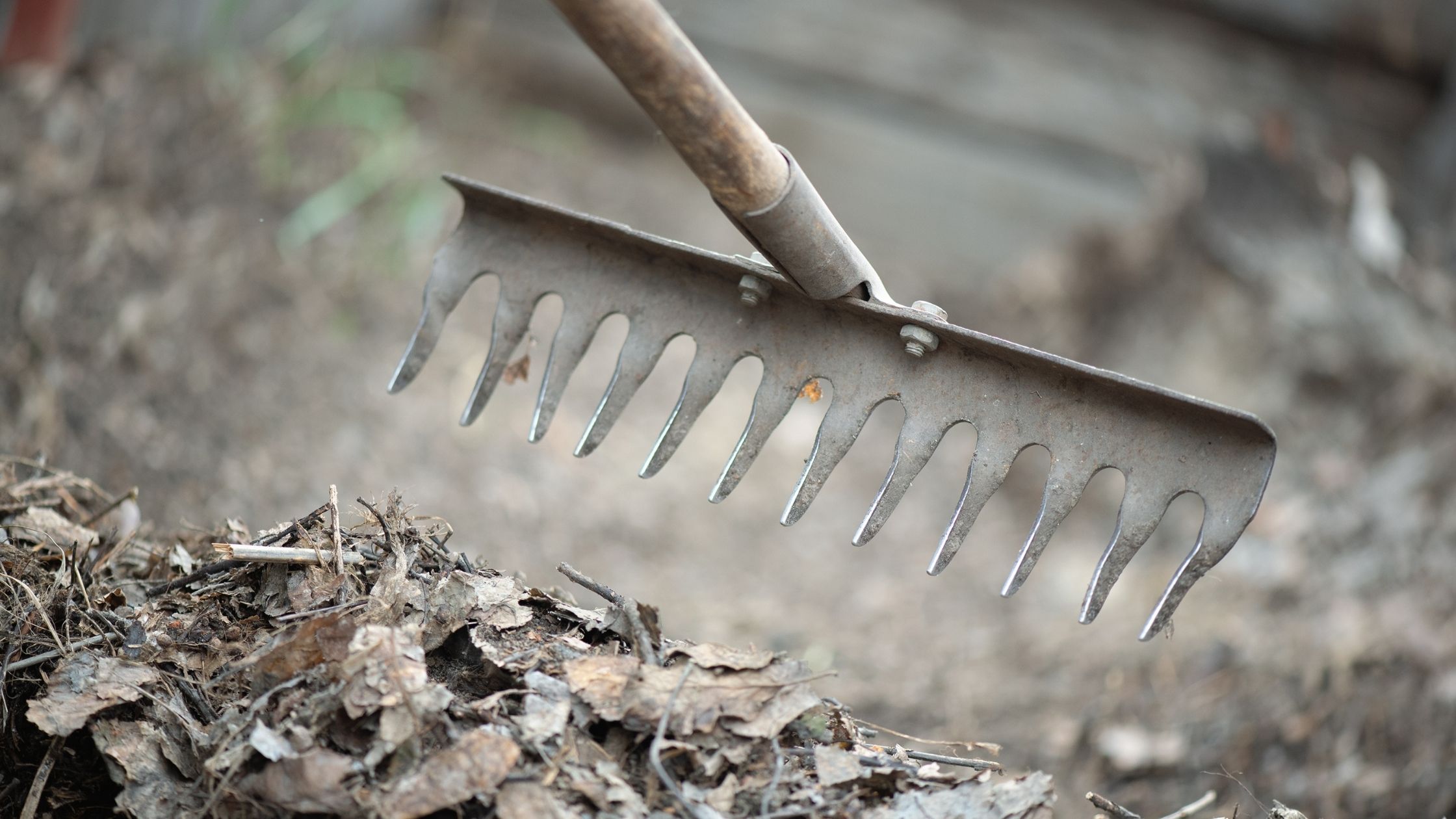
Flathead rakes, also known as level head rakes, are another garden rake type that features a head with a row of several tines connected directly to the rake handle. At the same time, flat head rakes are great for some of the tasks that you can perform using a bow rake but are especially great for removing debris and breaking up soil.
You can also flip the rake head upside down and use it for leveling the ground. Flathead rakes are available in different head sizes and handle lengths, so you can choose the one that best suits your needs.
Lawn Rakes
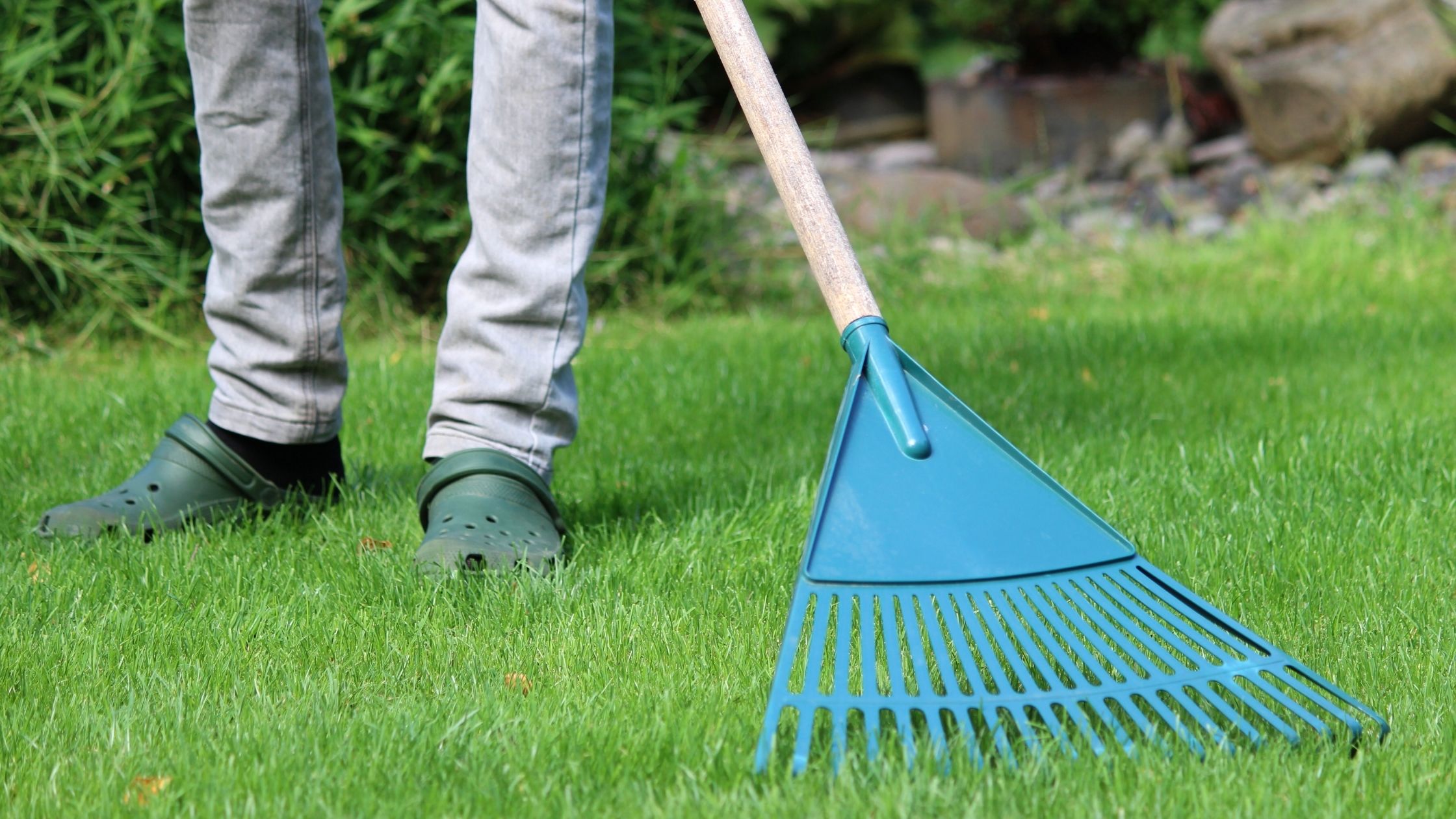
Another popular type of rake is a lawn rake. While many people may think of it as a leaf rake because of its design, lawn rakes are different. They have long handles and straight, long tines that spread out and create the shape of a fan.
Lawn rakes are great for raking up leaves, but they also perform several other functions, including raking up garden debris. Moreover, they can also help drag debris out from under the shrubs and large plants without damaging them. Lawn rakes are also used for breaking up the soil and move it around to improve its texture and quality.
While it’s one of the best types of rakes that can help you perform several different tasks, the only problem with its design is that the leaves can get trapped in the tines. At times when the leaves clog up, the rake is inconvenient to use.
Leaf Rake
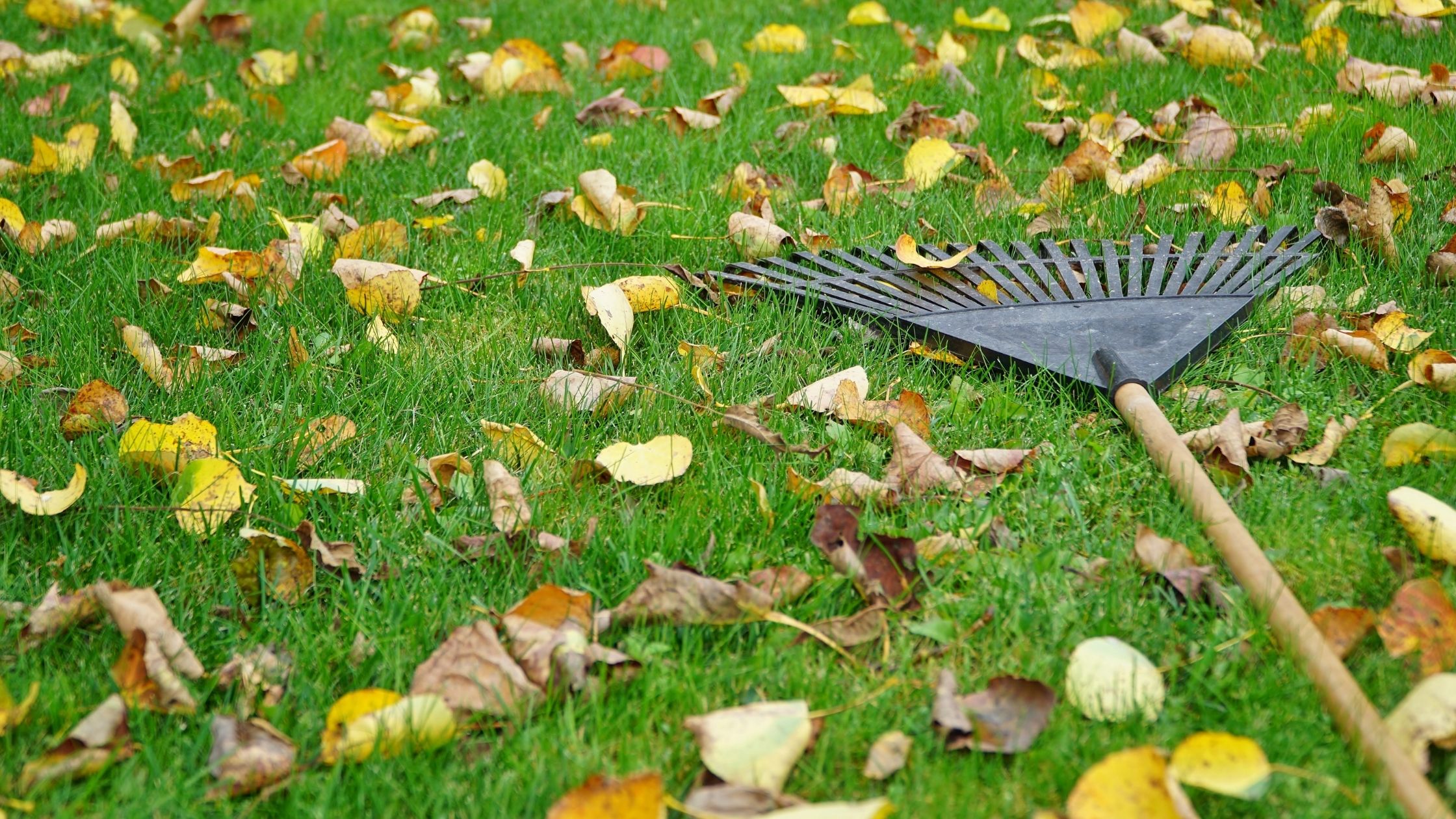
Next in line is a leaf rake that has a similar design as a lawn rake. However, the long fan-shaped tines are made from plastic and not from metal, as with lawn rakes. But despite the material difference, leaf rakes are more rigid than lawn rakes and are great for moving around lightweight material in your yard.
While leaf rakes can serve several purposes, they are an excellent choice for clearing up leaves that have fallen from trees giving a neat look to your landscape.
Thatch Rake
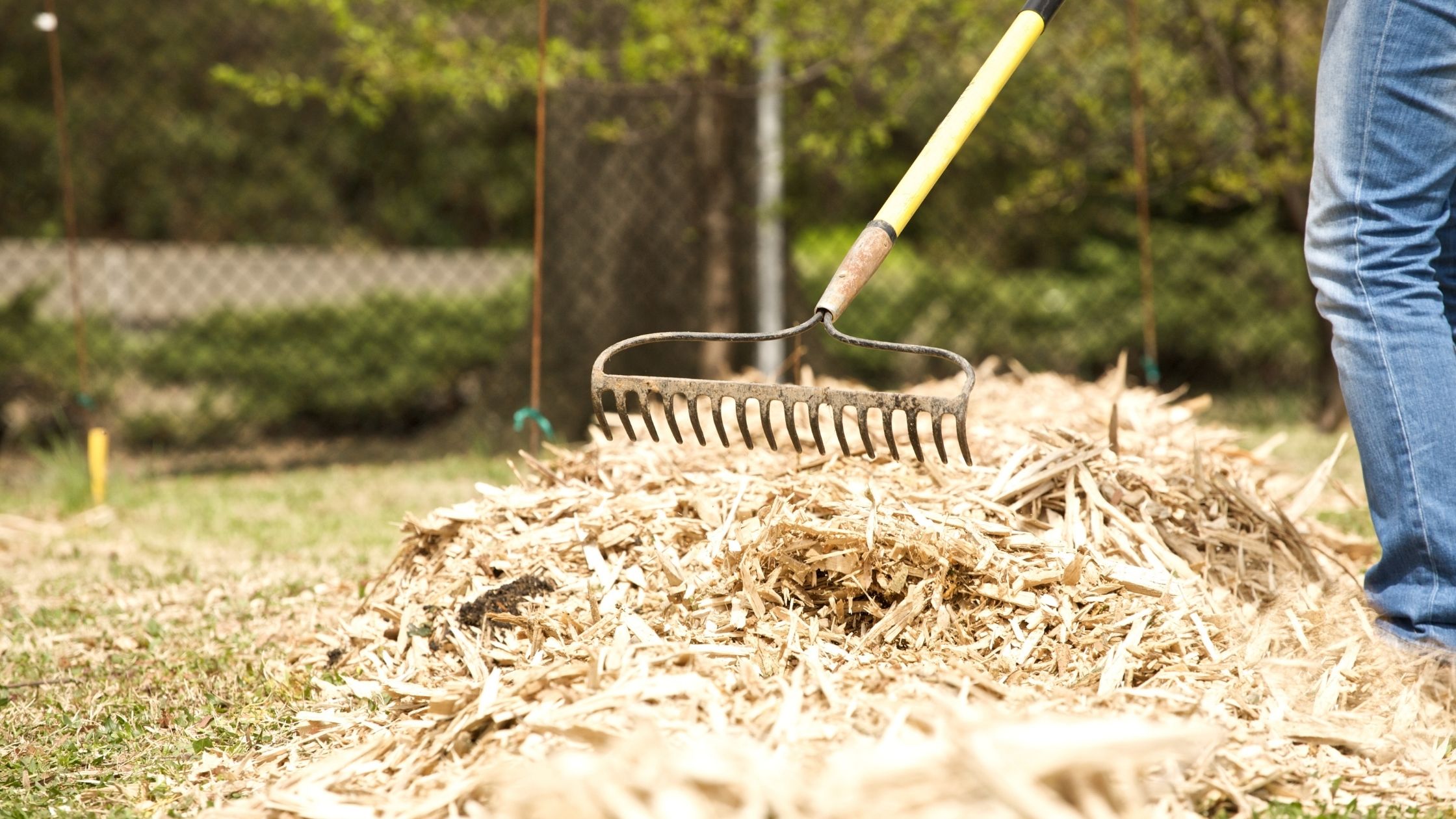
Thatch rake has a unique design and usually stands out from other types of rakes. The rake features several closely spaced curved tines, which are also large. The design of a thatch rake helps you remove the build-up of thatch, which is the organic debris that usually builds up on a lawn.
Given its specialized design, thatch rakes can help you eliminate all the thatch build-up with a simple movement. Moreover, because of the special purpose of this type of rake, they are also known as scarifying rakes.
Shrub Rake
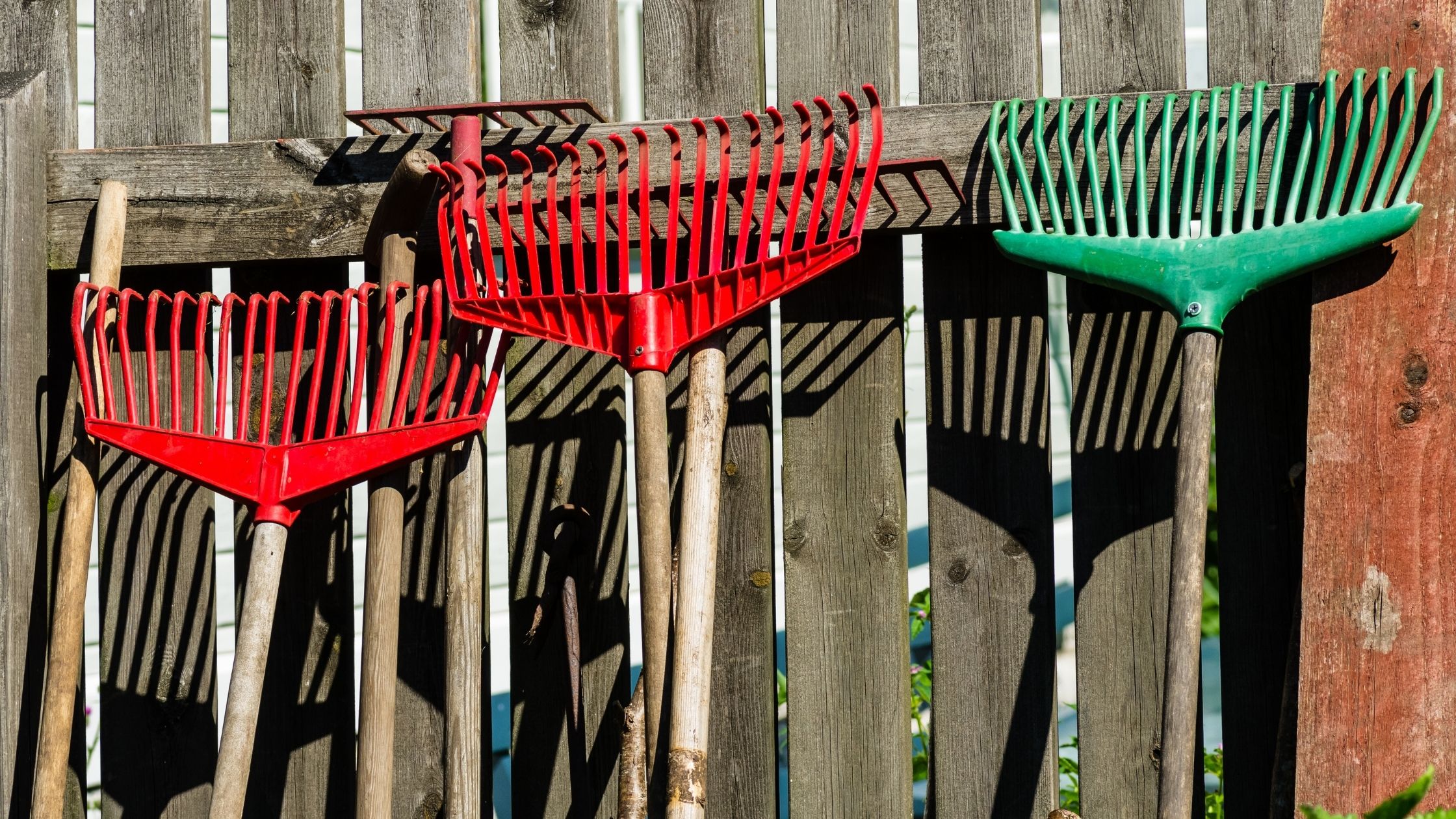
A shrub rake looks pretty similar to a leaf rake. However, the length of the tine is shorter. Moreover, there are lesser tines than you can find on a leaf rake. With fewer tines, you can guess that the head is narrower, and this type of rake is good for smaller spaces in your yard where your larger rakes cannot reach.
You can find shrub rakes that are made from plastic or metal and are great for cleaning up smaller areas of your yard quickly.
Stone Rake
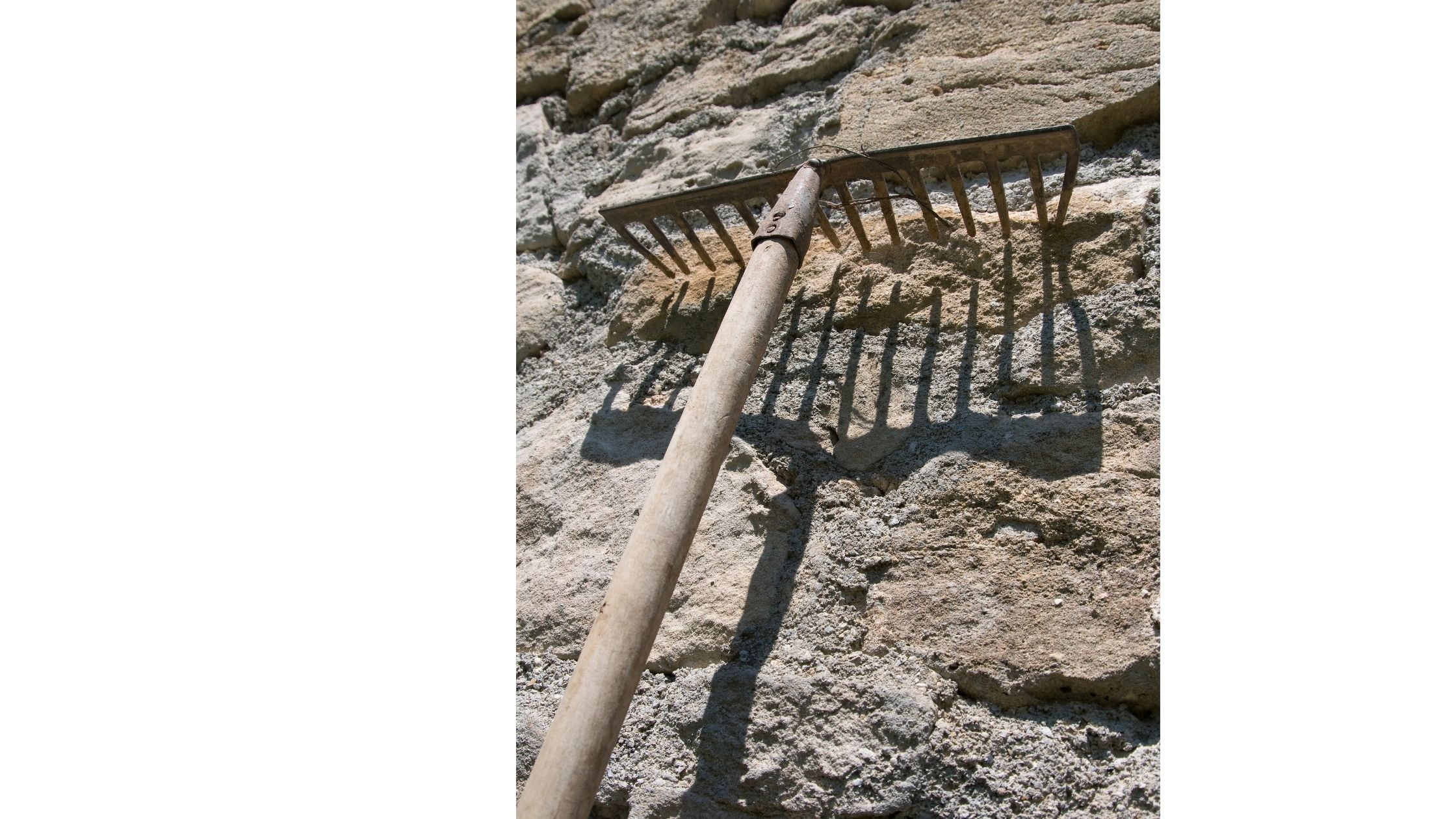
Also known as tarmac rake, a stone rake looks similar to any multi-purpose garden rake. However, it is designed to perform heavier tasks. So a stone rake has a wider head than a garden rake and is made from more durable material. Because they are made up of durable material and are designed for heavy-duty tasks, stone rakes are usually more expensive than other types of rakes, but they can serve you for years.
Leaf Scoop Rake
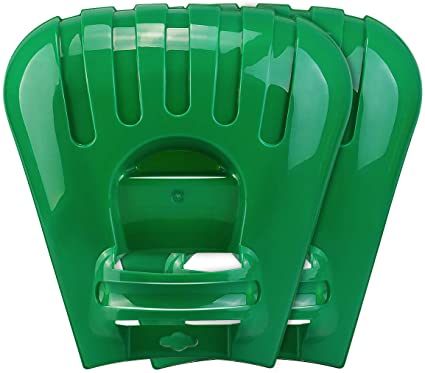
A standard leaf rake with a useful front twist is what is known as a leaf scoop rake. Using this type of rake, you can manually scoop up leaves and debris and transport them to a different location. Leaf scoop rakes are particularly helpful for individuals suffering from back issues as they don’t have to bend over to collect the piles of leaves. However, with a plastic construct, leaf scoop rakes are not suitable for performing heavy-duty tasks. Moreover, they are not designed to handle heavy garden material, including gravel.
Apart from the rakes used in your garden, there are several other types of rakes, including roof rakes, lake rakes, fire rakes, and concrete rakes that serve various purposes outside the yard.
How to Choose a Garden Rake?
As you head out to choose the right garden rake for your garden, there are a few things that you will need to keep in mind. Only when you give enough consideration to each of the factors can you make a more confident choice about your garden rake. You might find it interesting to read about all the different types of garden forks.
Your Purpose When Looking for a Garden Rake
Perhaps, the most important thing that you need to consider when choosing a garden rake is your purpose. Why do you want a rake for your garden? Do you want a rake to clean up the leaves? Or do you want one for turning the soil and improve soil quality?
Different types of rakes are used to perform different tasks. Here is a table that can help you choose the right type of rake depending upon your purpose.
| Your Purpose | ||||
| Rake Type | Leveling the Ground | Turning Soil for Improving Soil Quality | Scarifying Lawns | Raking Leaves |
| Small Garden Rake | ||||
| Leaf Rake | ||||
| Landscape Rake | ||||
| Thatching Rake | ||||
| Lawn Rake | ||||
| Shrub Rake | ||||
| Stone Rake | ||||
| Leaf Scoop Rake |
Size of Your Landscape
Another critical consideration that you should keep in mind when choosing a garden rake is the size of your landscape. If you have a large landscape with limited small spaces and corners, you will need garden rakes with larger and wider heads so they can quickly cover up the area. However, rakes with wider heads are often heavier and also do not move freely.
On the other hand, if you have a smaller area with many sharp corners or small gaps, you will need a rake with a smaller head. Rakes with narrow heads can get into awkward spaces and make the task easier and more manageable for you.
Evenness of the Ground
Apart from the size, you also need to consider the evenness of your ground. If you have uneven ground, it is best to go for garden rakes with flexible tines. An uneven ground may be more prone to damage if you use a rake with rigid tines.
Material and Weight of the Garden Rake
The material of the rake significantly affects its weight. Garden rakes made up of steel may be durable, but the rake is quite heavy, making the tasks difficult. On the other hand, garden rakes made up of aluminum and wood may be lighter, but they are not as durable as steel rakes. Aluminum rakes are often a good choice as they are tough and rust-resistant. On the other hand, wooden rakes often have soft tines which can rot if left wet.
But, you can find the best of both worlds by getting a fiberglass rake. It is the lightest in weight and is also durable. However, it is pricier than other materials. Moreover, you can also find rakes with plastic tines, which are often durable and flexible; however, plastic is not a very reliable material for heavier jobs.
In most rakes, the head and the handle are made of different materials so that you can get a strong and durable head and a lightweight handle, which makes the task more manageable for you without compromising your budget and your rake’s durability.
Handle Length
Next, it is integral that you give enough consideration to the handle length. As a rule, your rake is of a comfortable height if it reaches the bridge of your nose from the floor. Moreover, don’t forget that there will be some distance between the rake and your body as you hold it, so make sure you get a rake that feels comfortable at an appropriate distance.
Head Width
Depending upon the task you want to use your rake for and the size of your landscape, you need to decide on the most appropriate head width for your garden rake. If you have a large landscape to cover, go for a rake with a wider head. However, if your landscape has narrower spaces, you will need a garden rake with a narrow head.
Comfort
While many homeowners do not give enough consideration to this factor, comfort should be your priority. If you frequently use a garden rake, you can likely get blisters on your hands or experience back problems. So before you get a garden rake for yourself, make sure you go for one that is ergonomically designed and comes with a soft grip.
With these considerations in mind, you can decide on the best garden rake for your yard. However, it is equally important that you know various types of garden rakes that are available on the market, so let’s look at each one of them.
Choosing the Best Garden Rake for You
You can find several types of garden rakes on the market. Some garden rakes are more efficient than others but know that each rake is designed to perform a specific task. And while there is no single “best rake for you,” you can find the best one for yourself depending upon your purpose, landscaping needs, and preference of material and size. Only when you know the types of garden rakes available on the market and how to choose one for yourself can you make a more confident choice and tremendously enhance your landscape.
Read: Types of Garden Forks

